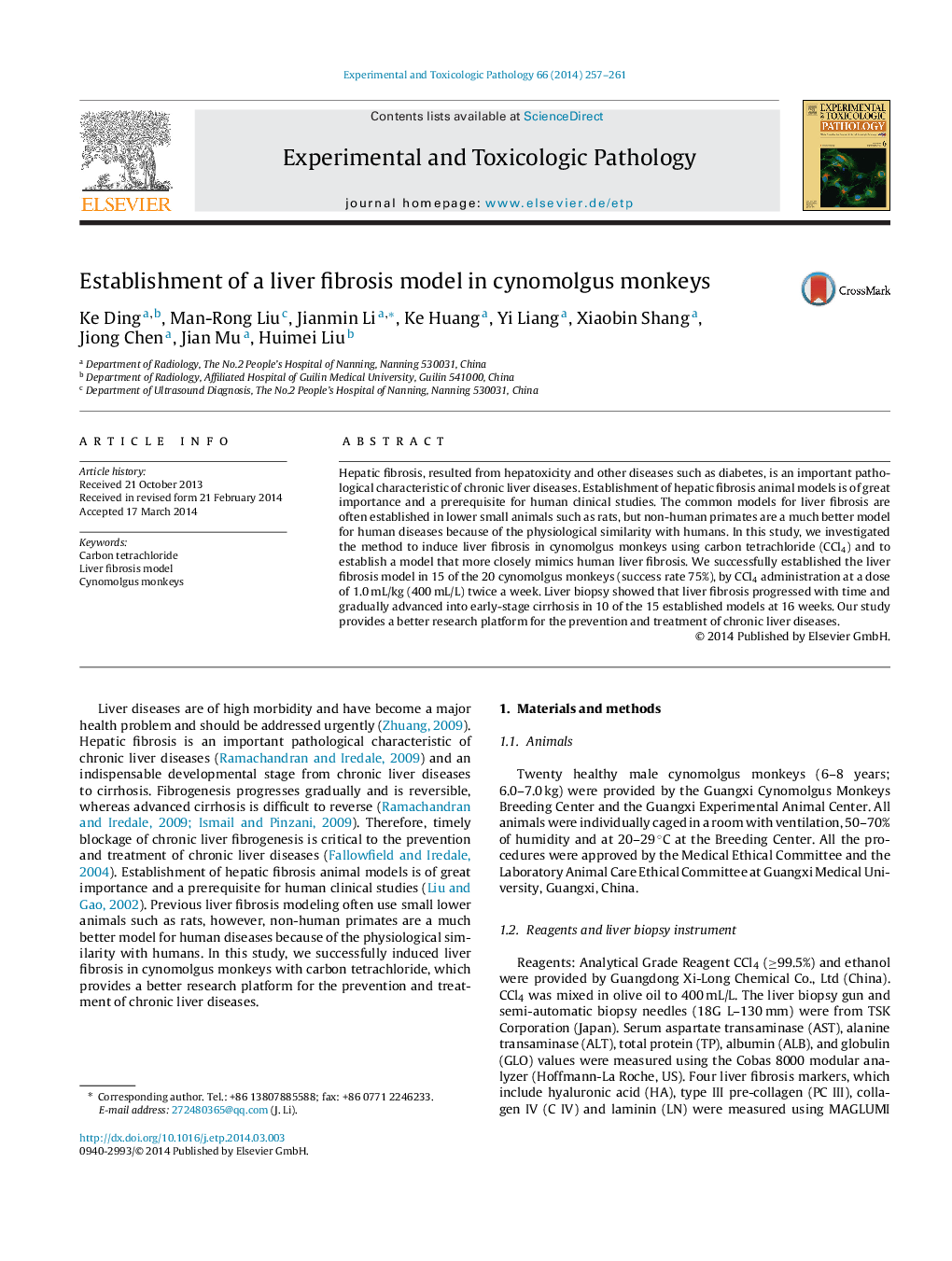| Article ID | Journal | Published Year | Pages | File Type |
|---|---|---|---|---|
| 2498832 | Experimental and Toxicologic Pathology | 2014 | 5 Pages |
Hepatic fibrosis, resulted from hepatoxicity and other diseases such as diabetes, is an important pathological characteristic of chronic liver diseases. Establishment of hepatic fibrosis animal models is of great importance and a prerequisite for human clinical studies. The common models for liver fibrosis are often established in lower small animals such as rats, but non-human primates are a much better model for human diseases because of the physiological similarity with humans. In this study, we investigated the method to induce liver fibrosis in cynomolgus monkeys using carbon tetrachloride (CCl4) and to establish a model that more closely mimics human liver fibrosis. We successfully established the liver fibrosis model in 15 of the 20 cynomolgus monkeys (success rate 75%), by CCl4 administration at a dose of 1.0 mL/kg (400 mL/L) twice a week. Liver biopsy showed that liver fibrosis progressed with time and gradually advanced into early-stage cirrhosis in 10 of the 15 established models at 16 weeks. Our study provides a better research platform for the prevention and treatment of chronic liver diseases.
